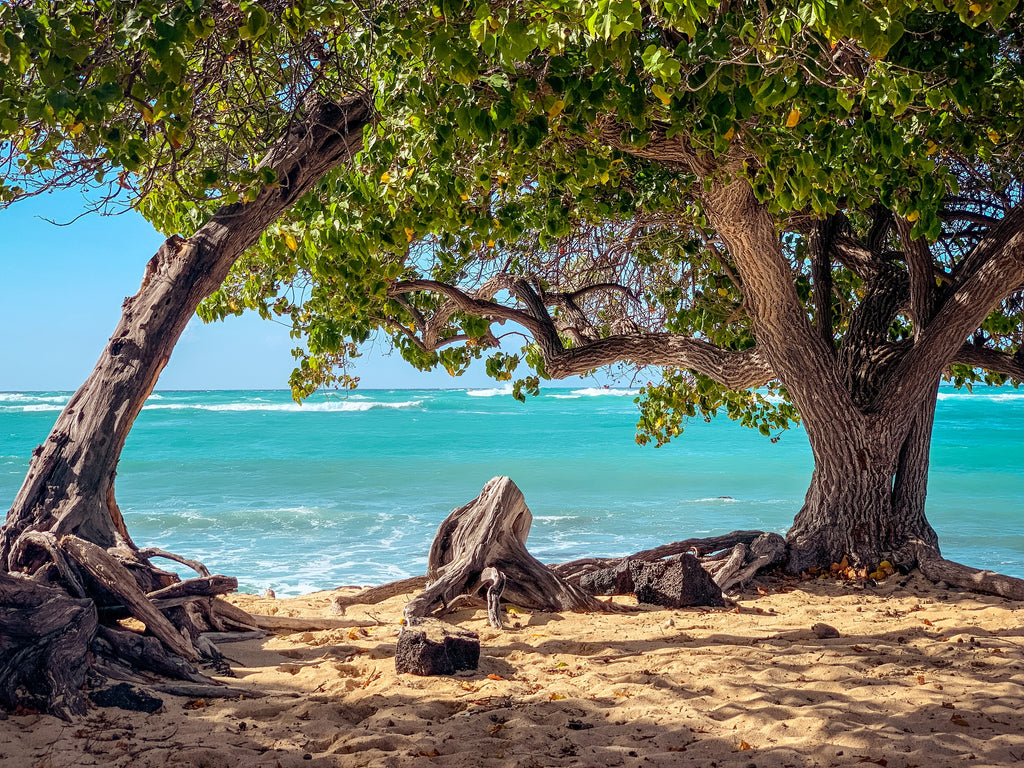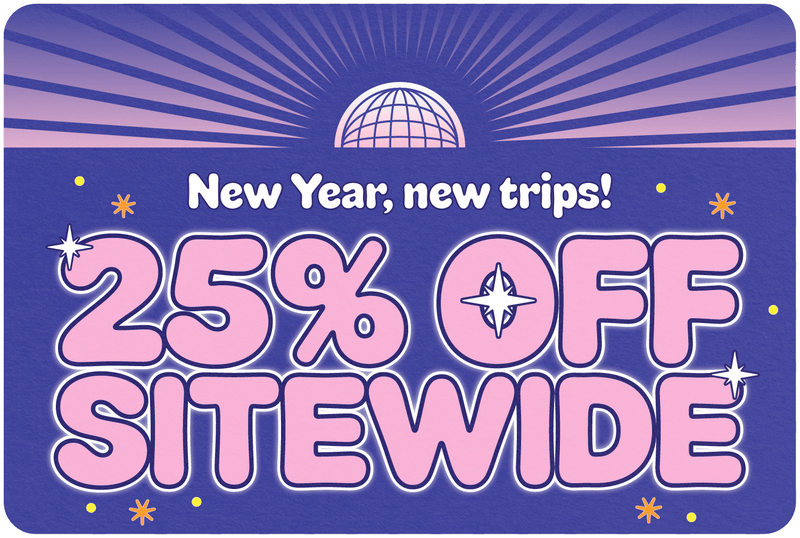
Unlocking the Paradise: When is the Best Time to Go to Hawaii?
Share
Aloha, fellow travelers! If you've ever dreamt of swaying palms, turquoise waters, and the sweet melody of ukuleles in the air, then Hawaii is calling your name. The question on every sun-seeker's mind, though, is "When is the best time to go to Hawaii?" Fear not, for your friendly neighborhood travel sage is here to unravel the secrets of this Pacific paradise.
Table of Contents
Understanding Hawaii's Seasons
Picture this: golden sands, a gentle breeze, and the sun kissing your skin. That's the Kau season in a nutshell – Hawaii's summer spectacle from May to October. It's the time when the islands show off their radiant side, boasting warm temperatures, low humidity, and skies bluer than a peacock's tail feathers.
But hold on to your sunhats, because the Hooilo season, spanning from November to April, brings a different kind of magic. Cooler temperatures and the occasional rain shower turn the landscapes into lush, vibrant tapestries. Plus, it's the prime season for whale watching as these majestic creatures migrate to Hawaiian waters.
The Kau Season (May to October)
Ah, the Kau season – a sun-soaked extravaganza that turns the islands into a tropical playground. The weather gods smile upon Hawaii during these months, blessing us with warm temperatures that make every moment a postcard-worthy experience. The low humidity is like a gentle breeze, ensuring you don't feel like you're wearing the air as a second skin.
Now, why is this the optimal time for your Hawaiian escapade? Well, my dear wanderers, it's the perfect weather for all your outdoor shenanigans. Whether you're into surfing, hiking, or simply lounging on the beach with a colorful drink in hand, Kau has got you covered.
And let's not forget the festivals and events that sprinkle a bit of Hawaiian magic on your visit. From the vibrant colors of the Lei Day Celebration in May to the lively Aloha Festivals in September, the Kau season is a celebration of life, love, and everything in between.
The Hooilo Season (November to April)
As we bid adieu to the sun-soaked days of Kau, the Hooilo season steps in with a different kind of allure. While the temperatures might be a tad cooler, the islands transform into a lush wonderland, with bursts of color and life at every turn. This is when you trade your sun hat for a light jacket and embrace the gentle touch of the occasional rain shower.
Now, why would anyone want to visit during the Hooilo season, you ask? Two words: whale watching. This is the time when humpback whales migrate to Hawaiian waters, putting on a show that's nothing short of a marine masterpiece. Imagine witnessing these colossal creatures breach and play against the backdrop of a Hawaiian sunset – it's the stuff of dreams.
But that's not all – the Hooilo season brings its own set of cultural events. From the Makahiki season, a time of peace and festivity, to the colorful displays of Christmas celebrations, there's a unique charm to experiencing Hawaii during these cooler months.
In a nutshell, choosing between Kau and Hooilo is like picking between two flavors of the same delectable ice cream – both are delightful, and it ultimately depends on your taste.
Breaking Down the Months
As we delve deeper into the Hawaiian calendar, it becomes apparent that each month carries its own unique charm. Let's embark on a journey through the seasons, uncovering the treasures that each stretch of time holds for the intrepid traveler.
January to March
The first quarter of the year welcomes you with open arms, offering a front-row seat to some of Hawaii's most spectacular experiences. January marks the commencement of whale-watching season, a thrilling opportunity to witness the majestic humpback whales in their natural habitat. The ocean becomes a stage for their acrobatic displays, turning your beach days into a mesmerizing spectacle.
Moreover, the spirit of aloha is alive and well during the Makahiki season. A time of peace, abundance, and festivities, this ancient Hawaiian celebration adds a cultural layer to your visit. Engage in traditional ceremonies, taste local delicacies, and immerse yourself in the rich heritage that blankets the islands.
Thanks for visiting our blog, are you planing to travel to Hawaii? Check out our eSIM Hawaii & Hawaii Sim Card.
April to June
As spring unfurls its vibrant colors, Hawaii enters a period of tranquility and allure. April brings forth a burst of life with blooming flora, turning the landscapes into a kaleidoscope of hues. It's the perfect time for nature enthusiasts, photographers, and those who find joy in the simple pleasures of a leisurely stroll amidst nature's artwork.
For the savvy traveler looking to avoid the crowds, April to June presents a sweet spot. With the peak summer season yet to kick in, you can relish in the beauty of Hawaii with a bit more elbow room. It's a time to discover secluded beaches, embark on hiking trails without the hustle, and indulge in the serenity that the islands offer.

July to September
Ah, the heart of summer – when the sun reigns supreme, and the islands come alive with a symphony of festivities. July to September is a playground for those seeking outdoor adventures. Dive into the warm waters for unparalleled snorkeling experiences, ride the waves on a surfboard, or simply bask in the sun on one of Hawaii's legendary beaches.
The sultry summer nights are not just about starry skies but also about the vibrant cultural events that light up the islands. From lively music festivals to the iconic hula performances, Hawaii invites you to dance to the rhythm of its beats and revel in the joyous spirit that permeates the air.
October to December
As the year begins its descent, Hawaii undergoes a subtle transformation from the warmth of summer to the gentle embrace of winter. October marks the transition, offering a delightful blend of lingering summer vibes and the anticipation of cooler days to come.
Cultural celebrations abound in these final months. October boasts Halloween festivities, a unique island-style celebration that adds a dash of spookiness to the tropical paradise. As November unfolds, the islands gracefully shift into the Makahiki season once again, signaling a time of reflection, gratitude, and communal celebration.
And then comes December, a month where Hawaii puts on its holiday attire. From Christmas parades to festive markets, the islands sparkle with the magic of the season. It's the perfect time for a holiday escape, where you can experience the warmth of the tropics coupled with the joy of the festive season.
Factors to Consider
Now that we've taken a stroll through the seasons of Hawaii, it's time to don our detective hats and explore the factors that could influence your perfect island escapade. Like any good mystery, the key to cracking the case lies in understanding the nuances. Let's unravel the secrets of Hawaii's weather variability, trade winds, and the ebb and flow of crowds and accommodation.
Weather Variability
Hawaii, with its diverse microclimates, is a weather chameleon. Each island, and even different regions within an island, can have its own unique weather patterns. Understanding these nuances is crucial for planning your dream vacation.
Rainfall Patterns: Picture this – you're on the lush windward side of an island, surrounded by emerald green landscapes. Now imagine being on the drier leeward side, where the sun-soaked beaches stretch as far as the eye can see. That's Hawaii for you – a masterclass in weather diversity. While one side might experience occasional showers, the other could be basking in sunshine.
Trade Winds: These aren't just your average breezes – trade winds are the invisible hands that sculpt Hawaii's climate. The northeastern trade winds bring cool, moist air, resulting in more rainfall on windward sides. Meanwhile, the leeward sides, sheltered from the winds, tend to be drier. Understanding this dance of the trade winds can be your secret weapon in planning the perfect Hawaiian getaway.
Crowds and Accommodation
Ah, the unavoidable dance of sharing paradise with fellow wanderers. While Hawaii welcomes visitors with open arms, the influx of tourists can vary throughout the year. Let's dissect the puzzle of peak tourist seasons, off-peak advantages, and the delicate balance of finding your own slice of Hawaiian serenity.
Peak Tourist Seasons: As the saying goes, good things attract crowds. The summer months, especially from June to August, witness a surge in visitors. It's the classic high season, drawing in families, adventure seekers, and sun worshippers alike. If rubbing shoulders with fellow explorers is not your cup of coconut water, you might want to strategize your visit during a different time.
Off-Peak Advantages: Here's a little secret – the off-peak season is not just about dodging crowds; it comes with its own set of perks. From September to November and February to April, you'll find more wallet-friendly accommodation prices, fewer people on popular trails, and a generally more laid-back atmosphere. It's like having the Hawaiian paradise all to yourself. Before you take off make sure to check with local government of the travel status.
In the grand scheme of your Hawaiian adventure, understanding the weather and crowd dynamics is akin to having a treasure map. Armed with this knowledge, you can navigate the islands with confidence, ensuring your experience aligns perfectly with your travel aspirations.
FAQ Section
Can I visit Hawaii on a budget?
Absolutely! The key is to consider traveling during the shoulder seasons, typically spring and fall. During these times, you not only enjoy more budget-friendly accommodation prices but also encounter fewer crowds, allowing you to explore Hawaii's beauty without breaking the bank.
What's the risk of hurricanes in Hawaii?
While Hawaii is situated in the Pacific hurricane region, the islands are rarely directly hit. Hurricane season runs from June to November, with the highest risk in August and September. The islands have robust systems in place to monitor and respond to any potential threats.
Is it true that winter is the best time for whale watching?
Absolutely! Winter, spanning from November to April, is prime whale-watching season. Humpback whales migrate to Hawaiian waters during this time, providing an awe-inspiring show. If you're a fan of marine marvels, this is the season to set sail on a whale-watching adventure.
Are there any cultural events unique to certain months?
Indeed! Hawaii's calendar is adorned with unique cultural events. In April, the Merrie Monarch Festival takes center stage, celebrating the art of hula. Come October, the Ironman World Championship attracts athletes and spectators alike, adding a dash of sporting excitement to the fall air.
Are there any discounts during the off-peak season?
Yes, indeed! Many accommodations and activity providers offer discounts during the off-peak season. From September to November and February to April, you can take advantage of more affordable options while still relishing in the beauty and tranquility of Hawaii. It's a win-win for budget-conscious travelers!








